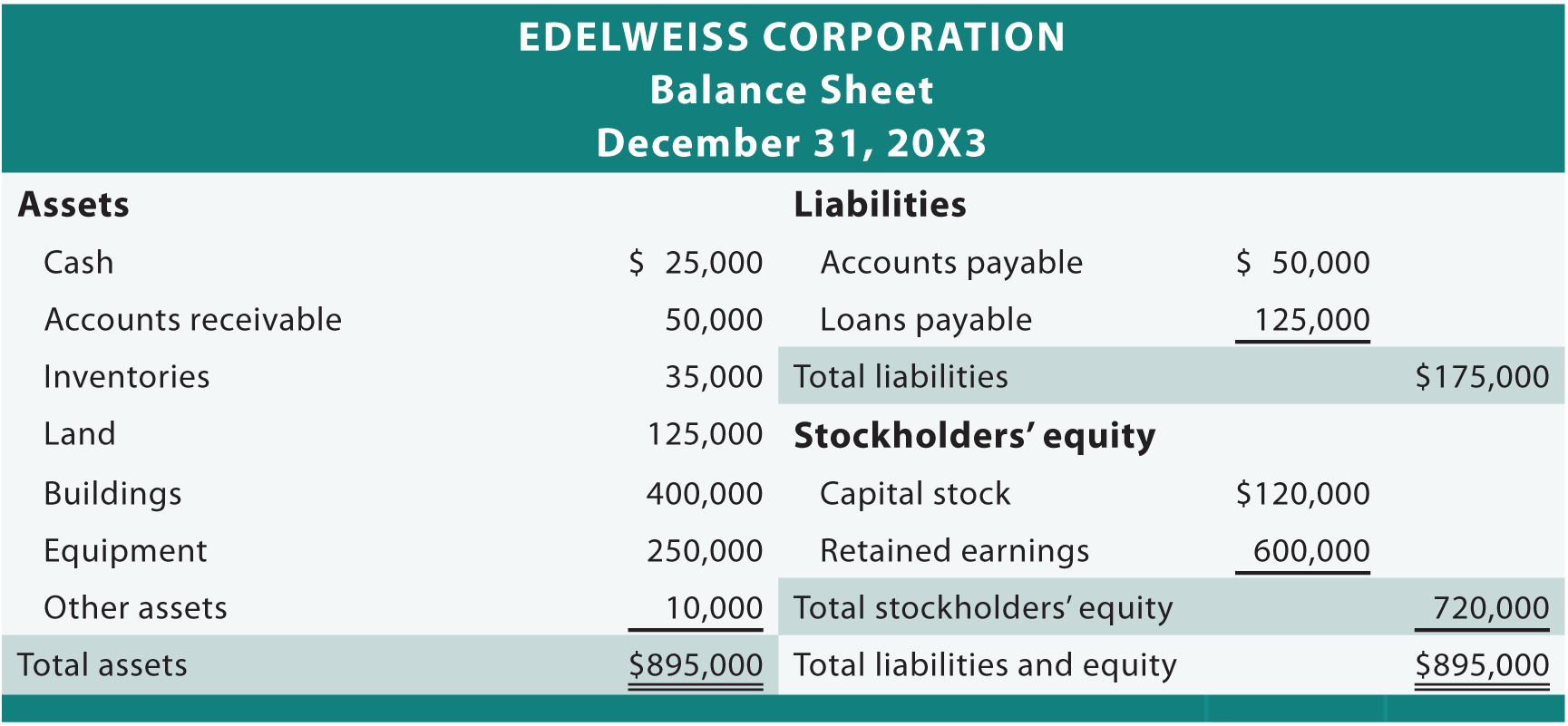BALANCE SHEET
The accounting equation is the backbone of the accounting and reporting system. It is central to understanding a key financial statement known as the balance sheet (sometimes called the statement of financial position). The following illustration for Edelweiss Corporation shows a variety of assets that are reported at a total of $895,000. Creditors are owed $175,000, leaving $720,000 of stockholders’ equity. The stockholders’ equity section is divided into the $120,000 that was originally invested in Edelweiss Corporation by stockholders (i.e., capital stock), and the other $600,000 that was earned (and retained) by successful business performance over the life of the company.
Does the stockholders’ equity total mean the business is worth $720,000? No! Why not? Because many assets are not reported at current value. For example, although the land cost $125,000, Edelweiss Corporation's balance sheet does not report its current worth. Similarly, the business may have unrecorded resources, such as a trade secret or a brand name that allows it to earn extraordinary profits. Alternatively, Edelweiss may be facing business risks or pending litigation that could limit its value. If one is looking to buy stock in Edelweiss Corporation, they would surely give consideration to these important non-financial statement valuation considerations. This observation tells us that accounting statements are important in investment and credit decisions, but they are not the sole source of information for making investment and credit decisions.
Assets ($895,000) = Liabilities ($175,000) + Stockholders’ equity ($720,000)


No comments:
Post a Comment